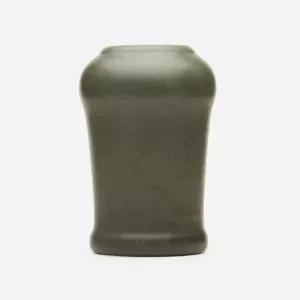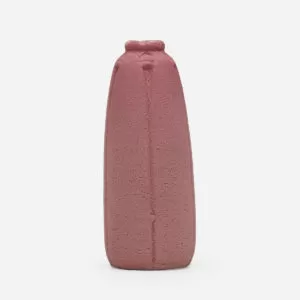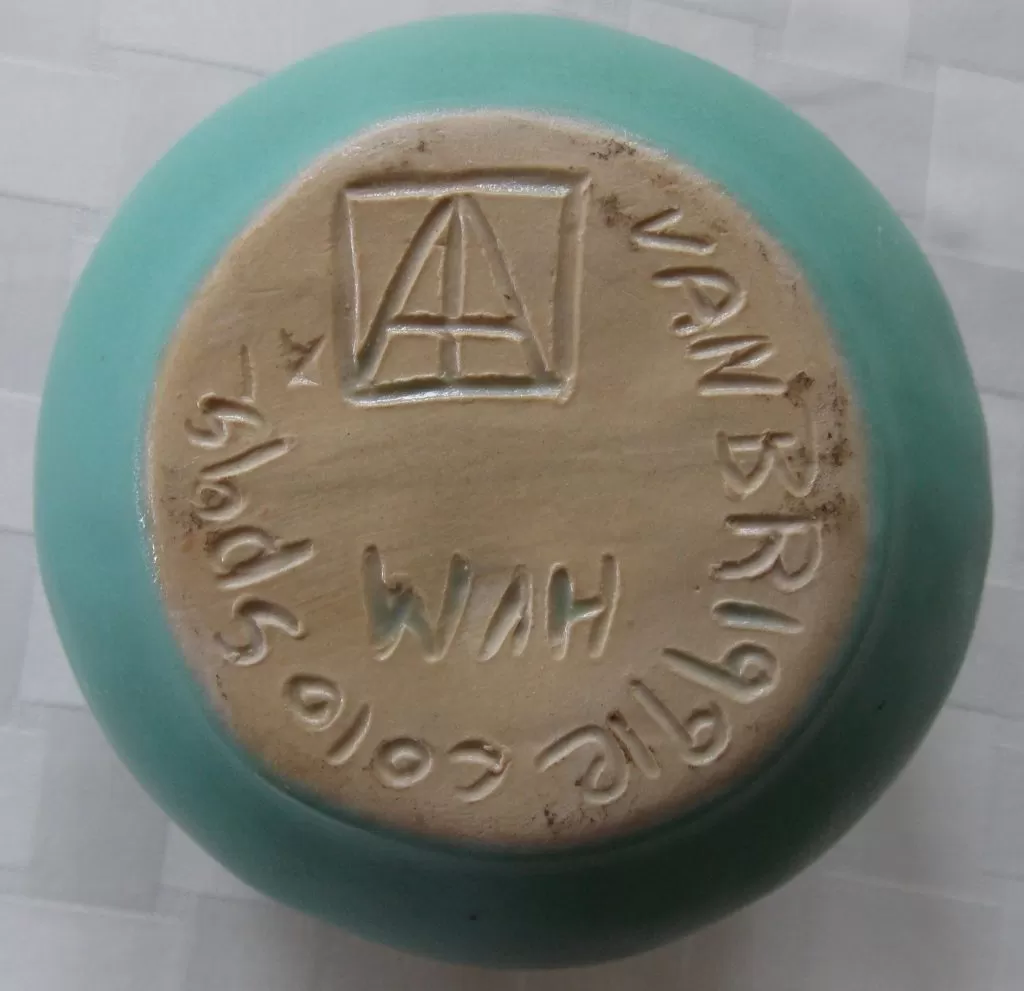The Life of Artus Van Briggle
by Kate Nixon




Artus Van Briggle for Van Briggle Pottery glazed earthenware vases offered in Rago Arts and Auctions’ recent Object & Home in clockwise order: Early vase ca. 1902 sold for $1,500 (800-1200), Early vase with geese ca. 1903 sold for $2,500 (800-1,200), rose-colored cabinet vase ca. 1908-11 sold for $688 (500-700), and an early “Fire-Water” jug ca. 1902 sold for $1,625 (1,000-1,500). Images courtesy of Rago Arts and Auction Center.
During Thursday’s Object & Home auction by Rago Arts and Auction Center, four vases by the American art potter Artus Van Briggle were auctioned off; one particular example sold very well due to its early example and an exact matching model being part of the permanent collection of the Metropolitan Museum of Art in New York. Vases by Artus Van Briggle have been known to sell in the thousands and in the case of early vases, in the tens of thousands; a deep blue early vase of Van Briggle’s, measuring 13.5 inches, sold for a whopping $70,000 at an auction in 2016. And while early vases can sell for tens of thousands, ceramic works by Van Briggle are one of the most attainable of the American art pottery firms and meticulously signed by the husband and wife team of Artus and Anne Van Briggle of Colorado Springs behind Van Briggle Pottery, the oldest living art pottery firm in the country.

Given the tens of thousands of pieces which were produced over more than 100 years, collectors certainly have their pick of ways to collect the works of Van Briggle. Some choose particular forms, such as the Lorelei vase or the Lady of the Lilly, and gather different examples and colors from various decades. Others pick a particular glaze color, such as turquoise, mulberry, Persian Rose, russet or black, and collect different forms in the same color. Those who are students and enthusiasts of Van Briggle Pottery may know this firm for its colorful examples, but those in Colorado Springs, home to Van Briggle Pottery, know the tragic story of the man whose name would be known to art pottery collectors today.

As a young child, Artus Van Briggle displayed a talent in artistry skills, growing up with his family of artisans in Felicity, Ohio. After moving to Cincinnati, known at the time for hosting many American ceramics firms, Artus would become an apprentice at Avon Pottery under Karl Langenbeck and by 1887, he continued onto Rookwood Pottery, refining his skills in painting, modeling clay, and making molds.
After impressing at Rookwood, the talented Artus was sent to Europe in 1893 to study at the Académie Julian and then the prestigious Académie des Beaux-Arts in Paris, where he met his future wife, Anne Lawrence Gregory, and explored an interest in fourteenth century Chinese Ming glazes. Van Briggle returned to Cincinnati and Rookwood Pottery, where he refined his style, inspired by his interest in Chinese glazes. The resulting works of his new matte glaze pottery proved popular but unfortunately, the celebration of his professional success was cut short with a discovery of a diagnosis of tuberculosis that was not improving. As a result, Artus and his wife left for Colorado Springs in hopes the warm temperatures would improve his health.
Van Briggle continued his ceramic experiments in Colorado, designing, casting, and firing the pieces almost entirely by himself – and word of his name and quality art pottery spread. His work appeared in magazines and newspapers by the end of 1901, and proved to be a hit with critics, according to American art pottery expert David Rago. “The individuality of his pottery, with its innovative combination of modeled Art Nouveau-inspired forms and masterful glazes, intrigued and excited viewers. He rapidly achieved international success; his entire twenty-four piece entry to the 1903 Paris Salon was accepted and he was awarded two gold, one silver, and twelve bronze medals. He then exhibited at the 1904 Louisiana Purchase Centennial Exposition in St. Louis, handily winning two gold, one silver, and two bronze medals, and would have won the grand prix if not for a rule prohibiting it being awarded to a first-time exhibitor.”
Unfortunately, Van Briggle’s life was cut short and during the St. Louis exposition, Artus would succumb to tuberculosis. Before his death, Van Briggle learned of his works earning the highest accolades in both America and in Europe. His wife, Anne, became president of the Van Briggle Company in 1905 and it operated until 2012, at which time it was the oldest continually operating art pottery in the United States.

Even after 1913 when the firm declared bankruptcy, the firm continued to produce works since the firm utilized molds to duplicate their most popular forms, including many of Artus Van Briggle’s earliest designs. Naturally, those which can be documented through shopmarks to have been created prior to his death in 1904 are considered the most desirable, often commanding five-figure prices.
To find out more about Van Briggle pottery, visit the Van Briggle website HERE.
To see the remaining lots that sold at Rago’s Object & Home auction, click here to visit the Rago Arts and Auction center website.
